From Yayoi Kusama to Robert Frank: Eight monumental artworks to see at Art Basel
Explorations of power dynamics, playful pumpkins, and gravitational bodies are among the highlights of this year’s Unlimited sector
By Emily McDermott
Staged across a 16,000-square-meter hall, the Unlimited sector of Art Basel in Basel features artworks of monumental scale. This year, 70 projects span a variety of media and contexts: Historical photographic series and large-scale sculptures appear alongside immersive contemporary installations, murals created in situ, and three performances. Keep an eye out for these eight highlights.
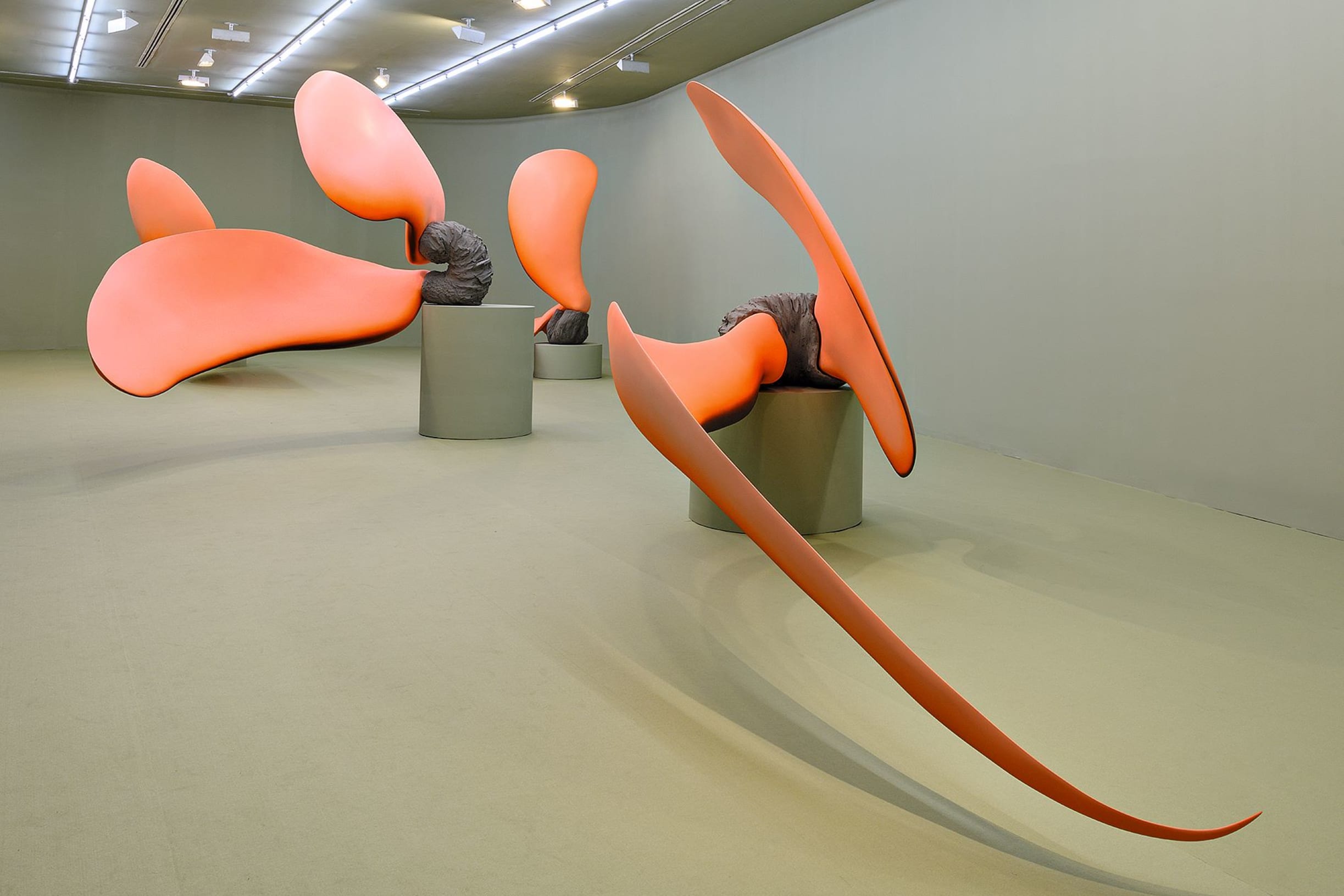
Teresa Solar Abboud
Tunnel Boring Machine (Transformation Figure), 2024
Presented by Travesía Cuatro
Spanish artist Teresa Solar Abboud investigates the sculptural qualities of theatrical spaces as well as the subterranean realm as a place of mysterious encounters, in order to propose new modes of interaction and existence. Tunnel Boring Machine (Transformation Figure) (2024) consists of two sculptures: One is like a mixture of a giant ear and elephant tusk, the other a spoon and a dolphin’s fin. Clay is used to join the zoomorphic fragments together, with the material representing, as the artist has said, the ‘relationship of mankind with the geological mantle on which our civilizations lay.’ The two hybrid forms appear like futuristic entities, alluding to bodies in states of transformation and blurring the lines between organic figures and those industrially produced, between the tangible and the mythical, fiction and reality.
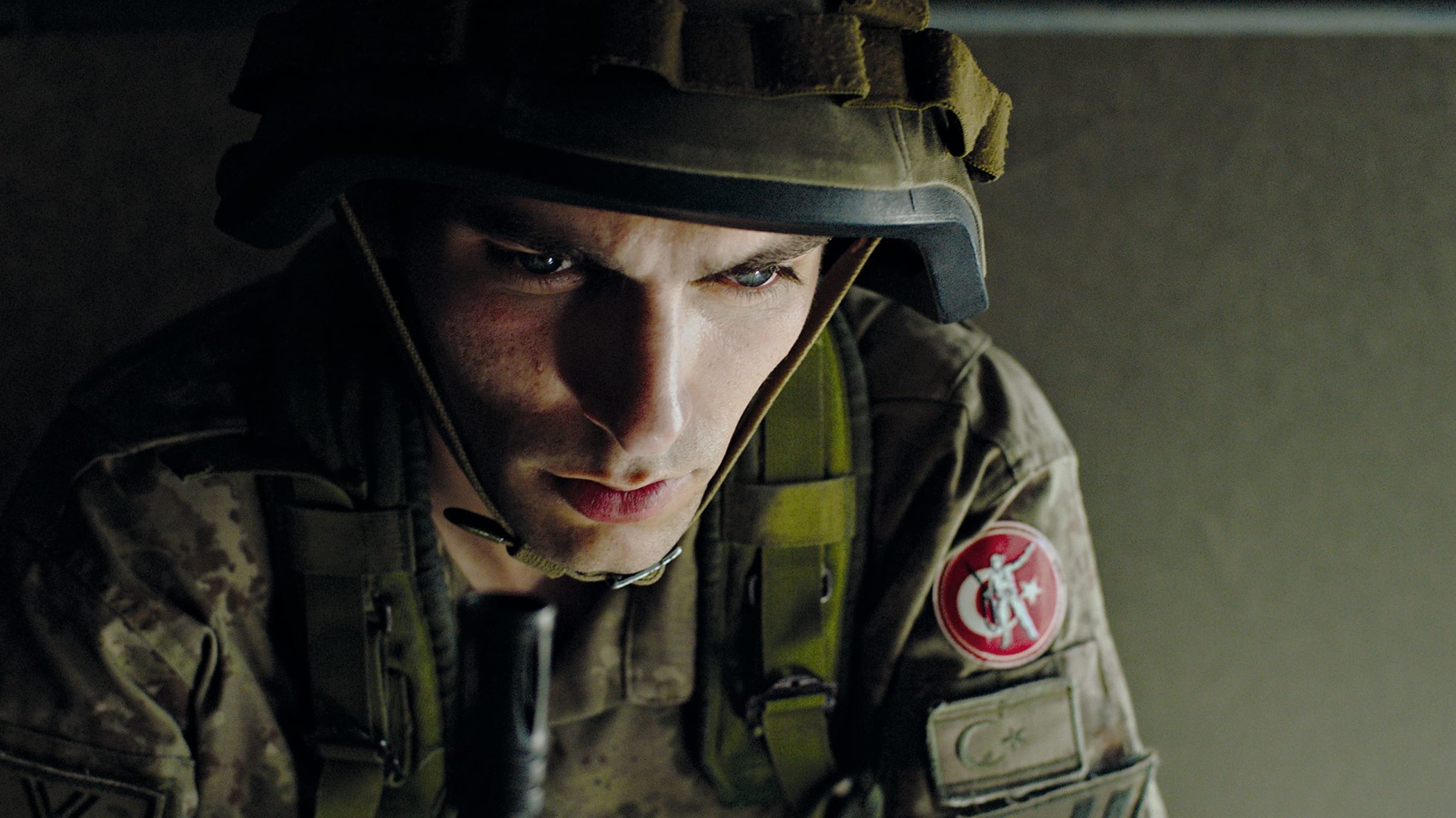
Ali Cherri
The Watchman/Welcome Soldiers, Open Your Eyes II, 2024
Presented by Almine Rech
With a short film and two larger-than-life sculptures, Beirut-born and Paris-based artist Ali Cherri unpacks the construct of war by examining the figure of the military guard. Shot in Cyprus, an island at the center of decades-long tensions between Greek and Turkish communities, the film takes the location’s political history as its starting point. The protagonist’s job is to guard the border of the unrecognized Turkish Republic of Northern Cyprus, but the majority of his shifts are spent in silence, slipping in an out of alertness and sleepiness. Two soldiers sculpted from mud are likewise slouched, as if sleeping. The installation questions the slippery nature of the inheritance of historical trauma, of the monumentalizing of power, and of the political recognition of borders and the consequences thereof.
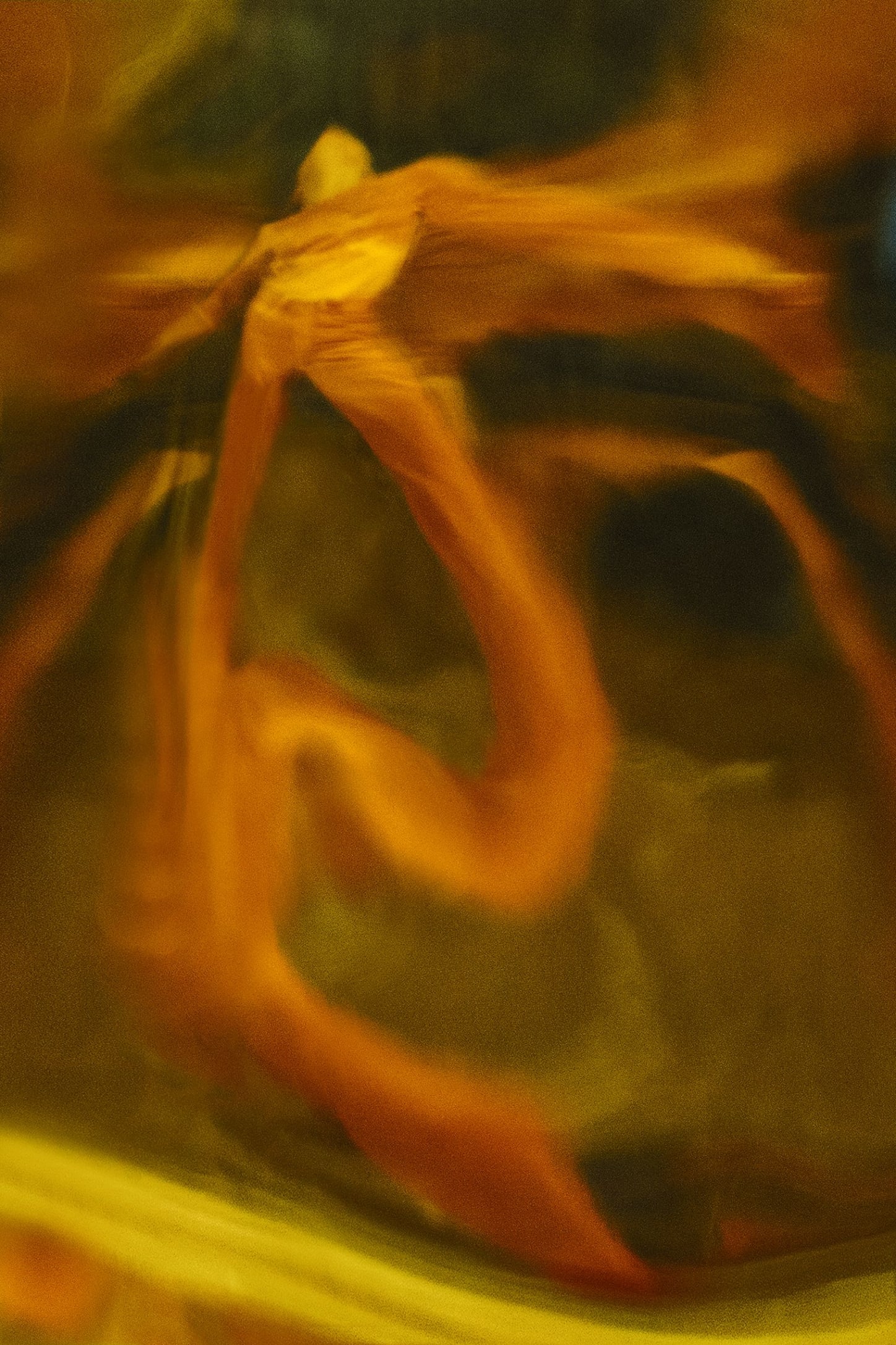
Maria Hassabi
Mirrors, 2024
Presented by The Breeder
In Maria Hassabi’s installation Mirrors (2024), photographs and the perception of oneself become tinged with an ambiguous golden hue. Straddling the intersections of performance and both moving and still images, Hassabi creates work in which every action – including the gaze – is subject to scrutiny. In Mirrors, a series of photographs shows dancers twisting and contorting their bodies; these images are mounted on a wall of acrylic gold mirrors. When looking at the photographs, the viewer thus merges with the dancers, becoming part of the performance and highlighting the constant negotiation between the body’s relation to gravity, time, and space.
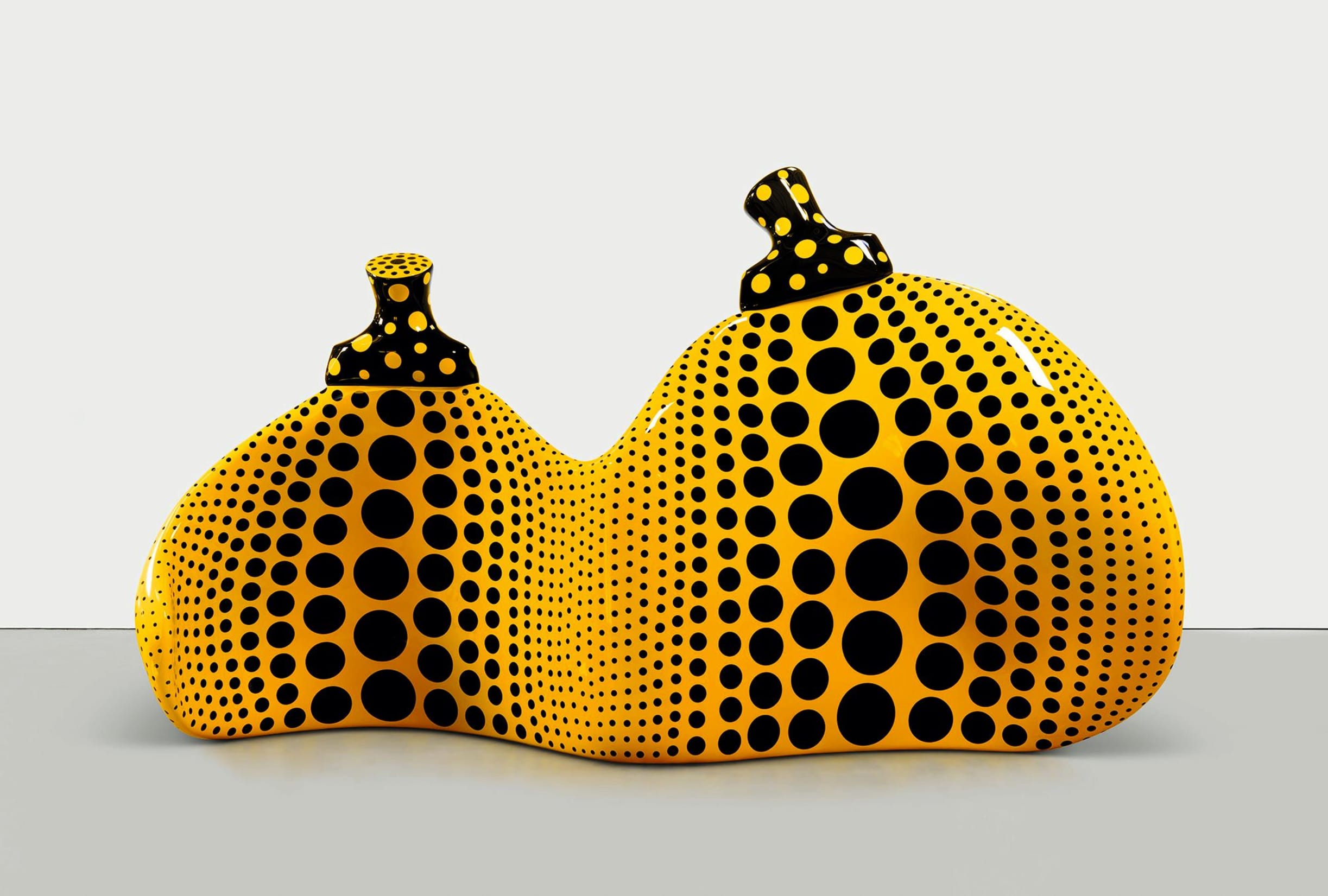
Yayoi Kusama
Aspiring to Pumpkin’s Love, the Love in my Heart, 2023
Presented by David Zwirner
Yayoi Kusama’s giant sculpture depicts two interconnected bronze pumpkins with undulating surfaces, augmented by lines of Kusama’s signature dots. The artist has used pumpkins to represent themes of infinity, fertility, and the sublime. Kusama first encountered a pumpkin as a child at her family’s plant nursery, and when she went to pick it, it supposedly began speaking to her. She soon painted the pumpkin and won her first prize – at the age of 11. Ever since, ‘pumpkins have been a great comfort to me,’ the artist has said. ‘They speak to me of the joy of living. They are humble and amusing at the same time, and I have and always will celebrate them in my art.’
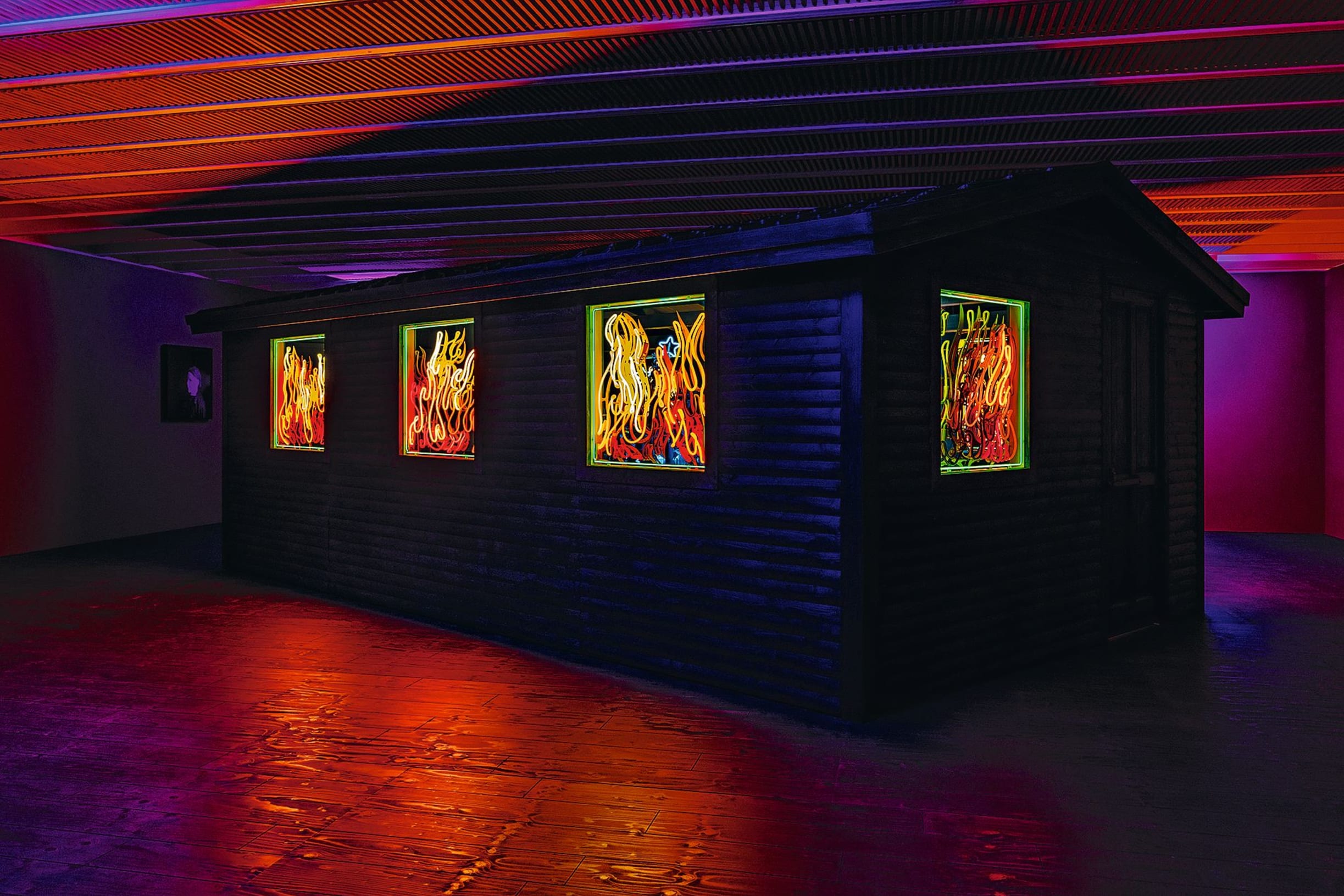
Alex Da Corte
Hell Hole, 2022
Presented by Sadie Coles HQ
Conceptual artist Alex Da Corte is known for creating environments concerned with the topic of consumption. Hell Hole (2022) comprises a life-sized wood cabin with windows illuminated by flame-shaped neon lights. Inside, a bearded male figure sits at a table covered with ephemera: half a disco ball, a neon star, a rolling pin, and what could be either a bong or a vase. ‘The work is about food, the politics of food, and the society and spectacle of consumption,’ Da Corte has said. Here, instead of acting as a symbol of capitalist success, the white-picket-fenced house becomes a place in which desire and consumption beget only hell.
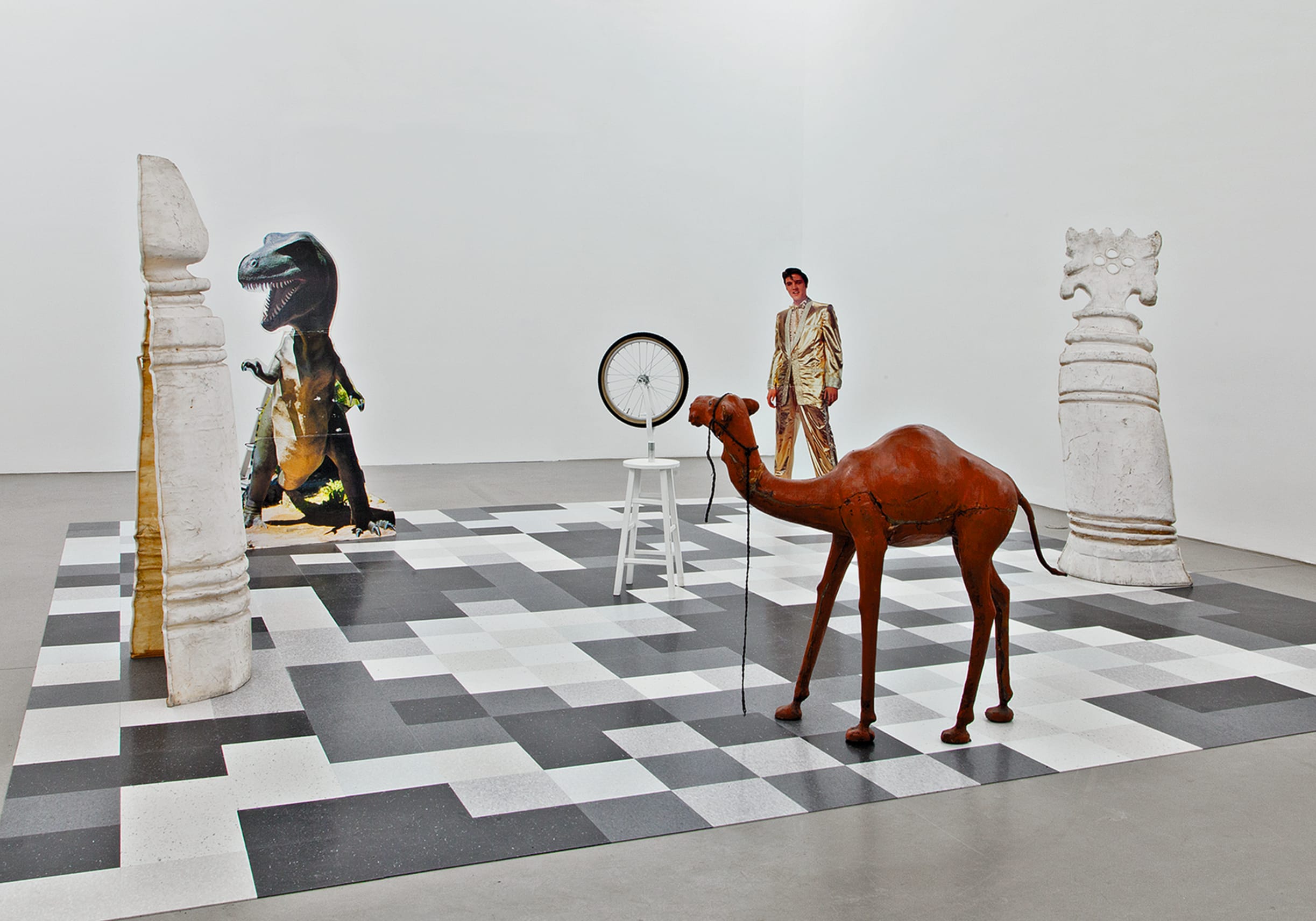
Lutz Bacher
Chess, 2012
Presented by Galerie Buchholz
For over five decades, Lutz Bacher explored the undercurrents of the political and pop culture of the US, often using found and appropriated materials: Chess (2012) exemplifies this. Rather than a traditional life-size chessboard, the ground is a tiled pattern reminiscent of a pixelated screen in grayscale. Atop the tiles are two giant chess pieces and a cast of objets trouvés: a camel, cardboard cutouts of Elvis Presley in his gold lamé suit, a Tyrannosaurus rex, and a replica of Marcel Duchamp’s Bicycle Wheel (1913). The installation uses the mechanisms at play in a game of chess to mirror the legacies of 20th-century icons, simultaneously alluding to gamified notions of capitalism, heroism, power dynamics, and idolatry.
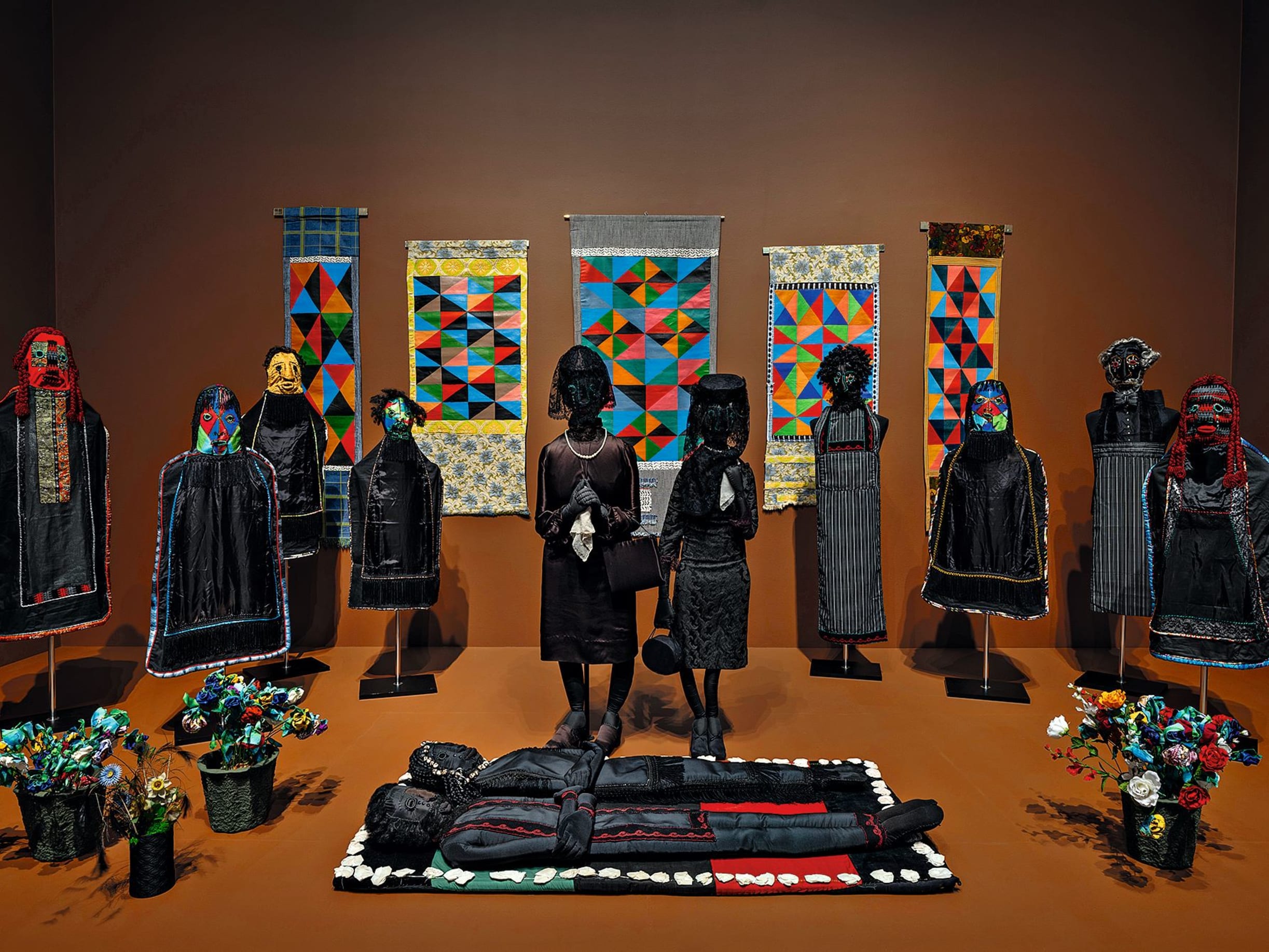
Faith Ringgold
The Wake and Resurrection of the Bicentennial Negro, 1976
Presented by Goodman Gallery
Conceived in response to the bicentennial celebrations of the adoption of the Declaration of Independence in the United States, Faith Ringgold’s The Wake and Resurrection of the Bicentennial Negro (1976) marks the artist’s first multimedia performance work. ‘We’re not going to celebrate that bicentennial because we weren’t free,’ Ringgold said at the time. The performance told the story of Buba, who dies of a drug overdose, and his wife Bena, who subsequently dies of grief. Relatives and friends mourn their passing, but then the couple is resurrected – free from drug addiction and interdependence, ready for a new beginning. Accompanying the performers were four sculptural ensembles: Bena and Buba crafted from black satin fabric stuffed with foam; a flag rendered in Pan-African colors and used as a ‘cooling pad’ for the corpses; two primary mourners crying tears of rhinestones and sequins; and bouquets of satin flowers. Today, the performance lives on in the restaging of these ensembles, as a reminder of what Ringgold stated when she first made the piece: By ‘the year 2076, we must turn things around so that all Americans can join the celebration.’
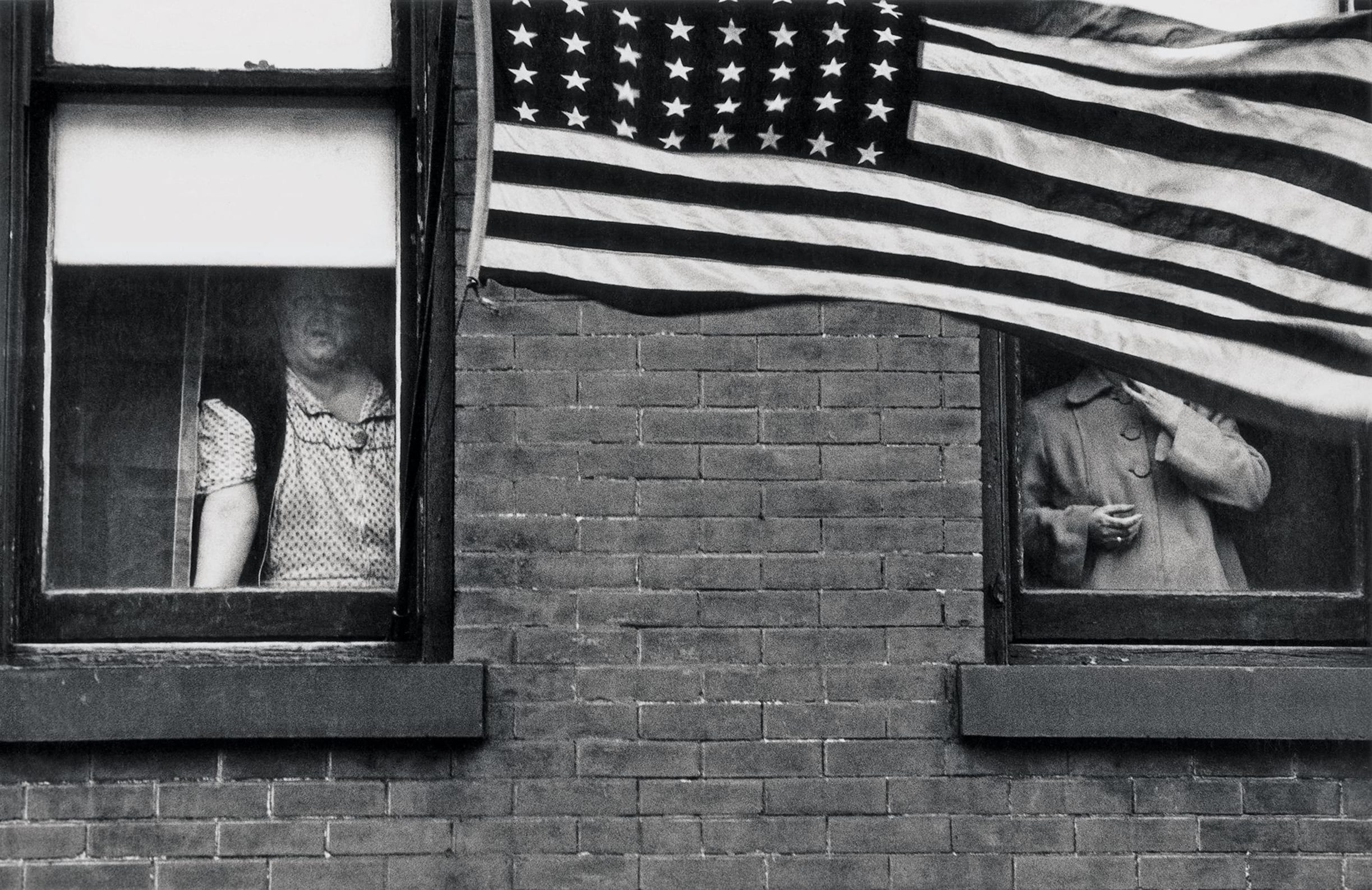
Robert Frank
The Americans, 1955-1957
Pace Gallery, Galerie Thomas Zander
One of the most influential figures in the history of photography, Robert Frank embarked on a two-year trip across the United States in the mid-1950s, during which he took over 28,000 black-and-white photographs; 83 of which were published in his seminal monograph The Americans (1958). Frank delved into corners of America, producing images that reveal a country haunted by racism, dirty politicians, and a rapidly expanding culture of consumption. On the occasion of what would have been the photographer’s 100th birthday, Pace Gallery and Galerie Thomas Zander are jointly presenting the last available complete printed set of The Americans – one that was, until now, kept in Frank’s personal archives.
Credits and captions
Emily McDermott is a writer and editor living in Berlin.
Learn more about the Unlimited sector of Art Basel in Basel, from June 13 to 16, 2024, here.
Caption for header image: Lutz Bacher, Chess, 2012. Courtesy of the artist’s estate and Galerie Buchholz.
Published on May 29, 2024.













